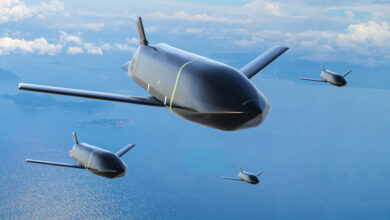US Navy Downs Target Drone With New Laser Weapon System
The US Navy shot down a target drone representing a subsonic cruise missile using an all electric high energy laser weapon system in a first-of-its-kind demonstration.
The ground-based Layered Laser Defense (LLD) “homed in on the red drone flying by, shooting a high-energy beam invisible to the naked eye,” causing it to fall down, the Office of Naval Research (ONR) explained in a statement.
The Lockheed Martin “multi-domain, multi-platform” system can counter drones and fast attack boats and track, identify and conduct battle damage assessment through its high-resolution telescope.

To Counter Future Threats
The navy awarded Lockheed a $22 million LLD prototype contract in 2020 involving “integration, demonstration, testing and operation…onboard a Littoral Combat Ship while the vessel is underway.”
According to the office, the service has no plans to field the system.
“LLD is an example of what a very advanced laser system can do to defeat significant threats to naval forces,” said David Kiel, a former US Navy captain who is a program officer at the ONR’s Aviation, Force Projection, and Integrated Defense Department, which managed the testing.
“And we have ongoing efforts, both at ONR and in other Navy programs, to keep building on these results in the near future.”
Other Naval Laser Systems
The demonstration comes months after the navy test fired a 150-kilowatt laser weapon system from the amphibious transport ship USS Portland.
The Solid State Laser – Technology Maturation Laser Weapons System Demonstrator is five times more powerful than Northrop Grumman’s AN/SEQ-3 Laser Weapon System installed on the USS Ponce for the last seven years.
It’s also more than twice the power of the 60-kilowatt HELIOS system that the navy was planning to deploy on the Arleigh Burke Flight IIA destroyer last year.











